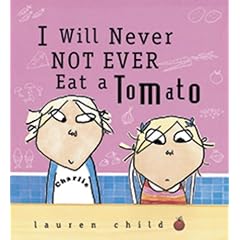 A. Title: Fair, Brown & Trembling: An Irish Cinderella Story
A. Title: Fair, Brown & Trembling: An Irish Cinderella StoryB. Author: Jude Daly
C. Illustrator: Jude Daly
D. Publisher: Farrar, Straus and Giroux
E. Genre: Traditional Irish Folktale
F. Reading Level: 2-3
G. Summary: In Fair, Brown & Trembling, in a castle in Erin lived a widower and his three daughters: Fair, Brown, and Trembling. Every Sunday Fair and Brown wore a new dress to church while Trembling stayed home to cook the meals. Trembling's two older sisters didn't want to let her out of the house because she was very beautiful, and they thought that she would marry before they would. The old henwife came up to Trembling and told her she should be at church. The henwife asked her what she wanted to wear, a white gown and shamrock-green slippers, and the henwife put on her cloak of darkness, chanted some words, and created the most beautiful gown and slippers for Trembling. The henwife also gave her a white horse and told her to stand in the doorway of the church but never go in and be sure to leave before the end of church to make it home in time. Next Sunday the henwife gave Trembling a dress of the finest black satan with scarlet shoes and a black horse. The next Sunday, Trembling wore a dress with a snow-white bodice and rose-red skirt and blue slippers, and she rode a white mare with blue and gold diamonds. Each Sunday everyone in church would wonder who she was, especially all the single men and princes. The last Sunday, the Prince of Emania stayed outside the church and as Trembling tried to ride away he grabbed her slipper off her foot. He searched all over for the foot that fit the slipper. Finally the Prince of Emania found Trembling locked in a closet in her Castle. After that the Prince fought off every other gentleman caller that Trembling had, and the two were married, lived happily ever after, and they had fourteen kids. The illustrations appear to be done in an oil pastel.
H. Response: I really wanted to read the Irish Cinderella tale because I have a lot of Irish decent, and I really enjoyed this version. There are a lot of similarities between the Disney Cinderella story and this Irish folktale: three sisters, one sister is forced to do the work while the other sisters enjoyed the spoils of life, a widower parent, a women who by some type of magic helped the Cinderella of the story, a prince, a slipper, a search for the woman's foot that fits the slipper, and a happily ever after ending. The differences include the fact that the widower is a man, the Cinderella went to church not a ball, the Prince took her slipper off her foot instead of finding it after she ran away, and at the end they have fourteen kids. The illustrations have really deep, rich colors, and the pictures seem very real and deep.
I. Teaching Ideas: There are so many ideas for lesson plans and lesson units on multi-cultural Cinderella stories. One unit plan that I found online had the purpose for students to recognize fairy tales/legends as literature genre and to identify positive and negative character traits. The unit objectives include being able to recall the story elements of the Cinderella story, orally retell the story of Cinderella, listen to different versions of Cinderella (book and video), discuss the univeral themes and traits of fairy tales, make a plan for a service project involving clothes for families in need, recall and make inferences about story events, compare/contrast Cinderella stories from different cultures, compare/contrast character traits, describe and compare character traits of the main characters, review characteristics of fairy tales, role-play a scene from one of the stories studied, and to write an original fairy tale. This is an example of a lesson plan for second grade. This is just one of the thousands of available materials for creating a lesson plan to teach multicultural story of Cinderella.








